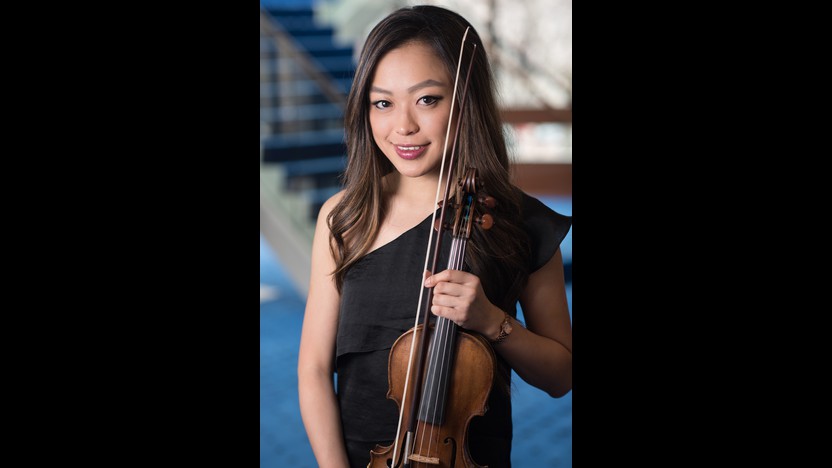Mozart’s Sinfonia concertante


 Listen to Audio
Listen to Audio
When Prince Nikolaus Esterházy completed a lavish country palace in 1766, the workload for his tireless Kapellmeister, Joseph Haydn, increased dramatically. The “summer” seasons at the estate stretched to be nearly year-round, and all the while Haydn had to produce operas, provide music for church services, mount concerts and attend to any other musical needs for his insatiable patron. “In Eszterháza,” Haydn later acknowledged, “I was forced to become original.”
Some of Haydn’s most original efforts in the late 1760s and 1770s reflected an artistic trend that has been dubbed Sturm und Drang (“Storm and Stress”) after a play of the same name. From literature to painting to playwriting, artists dared to explore emotional extremes and dark discomfort; for Haydn, it led to his first symphonies constructed in minor keys.
The Symphony No. 49 was among Haydn’s earliest minor-key symphonies, and it is arguably his darkest. Instead of the usual order of movements, this F-minor symphony begins with a devastating Adagio in F minor, a practice in line with the older “church sonatas” that arranged the movements slow-fast-slow-fast. A rather fast second movement continues in the same key of F minor, its theme marked by aggressive leaps and driving counterpoint. The key persists for the Menuet third movement, at least until the contrasting trio section in F major provides the symphony’s only substantial relief. The brisk, throbbing finale confirms this symphony’s F-minor fate.
This symphony’s nickname, “The Passion,” did not come from Haydn, and there is no indication that the symphony had any religious connection other than a performance during Holy Week in 1790 that advertised “La passione.” Another early source labels this symphony “Il quakuo di bel’humore” (“The Waggish Quaker”), which puts a completely different sheen on this symphony’s musical mood. If accurate, it suggests that Haydn may have originally created this music for the stage, to accompany a popular satire featuring a pious Quaker character. In that version of history, Haydn’s over-the-top emotions would have played as comedy, not tragedy!
Aaron Grad ©2017

My title, O Mikros, O Megas was inspired by the opening lines of Axion Esti, by the great contemporary Greek poet, Odysseas Elytis: “Aftos O Kosmos, O Mikros, O Megas” (This tiny world, this enormous world). There are no direct literal connections to the words, only the feeling of the intended ambiguity; certainly no superficial dynamic nor density parallels. In fact, it is to me that within the quietest and most inwardly moments of the work, the world seems to fully impose its power and enormity. At the same time, the figurative “flip-side” of my work's title could well be “This tiny fleeting life, this huge eternal life” – a reflection on recent world circumstances including the tumbling world, loss of friends and my own personal advancement into the foothills of an ageless maturity.
Thinking and hearing into the sonic qualities and potentials of the string orchestra, my creative and inward sensibilities seemed to eschew many “fast and loud” possibilities for those of quietude and grace. I fought with this tendency, frankly, during the word's composition, however, in the end, textures of long, quietly floating tensions won out, for the most part. There are faster movements among the four and imploding episodes, but the heart and largeness of the work are made manifest in the second and last. All movements end quietly and the last, with my most preferred ending, a “dot dot dot” figure. In fact, in the score, the performers are given the option of repeating the final phrase for as long as desired, until the “end” of the work is felt.
George Tsontakis ©2016

Wolfgang Amadeus Mozart, the onetime child prodigy who had dazzled audiences all over Europe, found himself in an unexpected predicament in his early twenties: he was stuck in his hometown of Salzburg. He resigned from the court of the local Archbishop in 1777 and set out with his mother in search of new employment, but his visits to Mannheim and Paris failed to produce any real prospects. At least he came away from his time in Mannheim, home to one of the world’s finest orchestras, with a new arsenal of brilliant ensemble effects.
Mozart returned to Salzburg in 1779 and begrudgingly resumed working for the Archbishop. On the side, he cultivated his own private circle of musicians and patrons, for whom he wrote symphonies, concertos, serenades, and other entertaining diversions. We don’t know exactly the circumstances that led to Mozart composing the Sinfonia concertante for violin and viola in 1779, but we can presume that it was some social event in Salzburg. Mozart, a fine violinist and violist, would surely have played one of the solo parts.
The idea of a concerto for multiple soloists had been around for nearly a century (in the form of the concerto grosso), but the sinfonia concertante was a trendy new approach flourishing in places like London, Mannheim, and Paris — where Mozart actually wrote his first example for a quartet of soloists. In the Sinfonia concertante for violin and viola, Mozart addressed the natural imbalance in projection by calling for the viola to be tuned a half-step higher than normal, increasing the alto instrument’s power. (Modern instruments and metal strings have alleviated this need, so today’s soloists often forgo the transposition.)
One of the sounds Mozart picked up in Mannheim was a long crescendo that gathers strength over a constant bass note, a device so characteristic of the local composers that it was dubbed the “Mannheim roller.” A terrific example is the final climax of the tutti exposition that precedes the arrival of the soloists.
The central Adagio movement unwinds its haunting main theme in skeins of long, singing phrases that weave between the two solo instruments. As in the first movement, the two soloists share a fully composed cadenza, imparting a chamber-music intimacy to this orchestral score. The finale continues the impressive display of ensemble colors, including prominent passages for the horns and oboes, all in support of quick-witted banter between the soloists.
Aaron Grad ©2024
Get driving directions and find nearby parking.
Find dining options close to the venue.
View seating charts to find out where you'll be seating.
Get driving directions and find nearby parking.
Find dining options close to the venue.
View seating charts to find out where you'll be seating.
